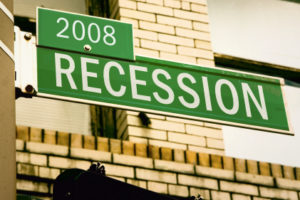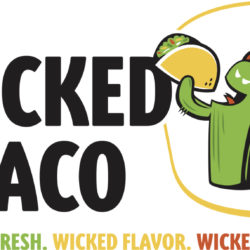America is a Nation that Remains Deep in Debt
Financial literacy has long been a passion of mine and I’ve dedicated many service hours to helping people become aware, educated and strengthened through sound knowledge on how to properly manage their money and stay out of debt.
My earliest work included serving as spokesperson for a local program, Future Cents, hosted by the Greensboro Library and funded through the Jump$tart Coalition – we spent two years engaging teenagers and sharing fundamental tactics on how to gain control of money, stay out of debt and fund college. The program director Martha Larson was incredible to work with and I still receive messages from many of the kids that were in high schools that we visited.
Afterwards, I accepted a role on the North Carolina Council on Economic Education, agreeing to lead the governmental affairs committee, co-chairing the marketing and public relations committee; not to mention serving on the executive committee for the past seven years.
The U.S. Senate passed a resolution in 2004 recognizing April as National Financial Literacy Month in an effort to highlight the importance of the issue and promote teaching Americans how to establish and maintain healthy financial habits. Many financial institutions and non-profits hold promotional events and distribute educational materials that center on effectively managing money, reducing debt and building wealth.
Despite the many individual, organizational and institutional efforts set in motion to address the growing financial illiteracy in this country – 4 out of every 10 Americans don’t understand how to balance a checkbook – recently published reports reveal a worsening situation by every available metric.
National Debt
U.S. national debt is currently $19.9 trillion or 106% of GDP – $165,653 in debt per taxpayer or $61,206 in debt per citizen – not to mention the interest on the federal debt alone increases $14,057 per second. Wow.
Needless to say, the country is a washed in debt, with no clear plan to deleverage the federal balance sheet. In fact, we continue to spend more than our means, U.S. federal tax revenue is around $3.4 trillion and spending is $4 trillion – so we add $600 billion to the national debt every fiscal year.
70% of the federal budget’s resources pay for mandatory spending – Social Security, Medicare and Medicaid – with the balance paying the interest on the nation’s debt; slowly crowding out funds for strategic long-term investments such infrastructure, education and commerce.
It’s also worth noting $5.4 trillion of the national debt is money the federal government owes to the Social Security Trust Fund – which jeopardizes the future retirement of many beneficiaries counting on those resources.
If elected leaders are supposed to model effective financial stewardship to the rest of the country, undoubtedly they are failing miserably. It also becomes evident why some Americans may approach their household finances with a spend first, save later mentality – they witness it daily in the nation’s capital.
Consumer Debt
At the individual household level, the situation is just as bleak, with total U.S. household debt now at $12.58 trillion. Growing by $460 billion in 2016 alone – the largest increase in almost a decade.
Prior to the “Great Recession”, the debt load of American families reached a high of $12.68 trillion, before a massive deleveraging triggered by a credit market freeze.
Banks publicly complain that regulations such as Dodd-Frank are complicating their ability to do commercial loans for small businesses, but rising consumer debt signals that banks are extending more credit in other ways.
Residential mortgage originations increased last year to the highest level since the housing crisis. Mortgage balances are the largest component of household debt and ended 2016 at $8.48 trillion.
Most personal finance experts agree that housing debt is “good debt” because it’s secured by an asset increasing in value; however credit card and auto loan debt are not viewed as favorably – both jumped considerably last year returning to record highs.
Auto loans increased by $22 billion as new originations surged. Credit card debt rose by $32 billion to hit $1 trillion, which is typically a good sign for the economy because consumers are spending on purchases and driving growth.
However economists question how ordinary Americans will repay a mountain of debt if unemployment rises, wages stagnate or interest rates leap as the Federal Reserve abandon an era of “cheap money” policy.
Most credit cards have variable rates and pose risks to borrowers – the Fed started raising interest rates in late 2015 and those moves have added $4.3 billion in additional charges for consumers through 2017.
Household debt service payments account for 10% of disposable personal income – this figure peaked at 13.2% in 2007 – so it appears that Americans have space to accumulate more debt before hitting a ceiling. But missed payments on consumer loans are already climbing.
Student Loan Debt
Economists and market analysts worry that student loan debt may trigger the next credit market crisis in America. Balances exceeded credit card debt in 2010 and auto loans in 2011, passing the $1 trillion mark in 2012.
Student loan debt rose by $31 billion in 2016 to hit a total of $1.31 trillion. More than two-thirds of college graduates come out of school with debt, with the average debt at graduation now $35,000 – significantly higher in the past two decades from a low of $10,000.
As the U.S. Treasury is now hit with rising costs in other areas of the federal budget, government grants and support for postsecondary education has fallen at the same time college cost are rising. This shift has placed a larger burden on families to pay for college.
For the past decade and half, wages have been stagnant, causing students to either borrow more to pay for college or enroll in less expensive institutions. Enrollment in public colleges and two-year community colleges are swelling because of this change in behavior.
Students who graduate with excessive debt are more likely to delay major life events – getting married, buying a home or having children – not to mention the debt may influence employment plans, many students take a career outside their field simply to repay student debt, or they work more than one job.
Parents should educate their children on the power of restraint – perhaps selecting a pathway that is affordable or initially spending time pursuing an associate degree can reduce overall costs, lower debt service and improve quality of life as they enter their professional life.
Economic Literacy is the Solution
The U.S. economy has transformed in significant ways over time – originally focused on production and capital investment – today’s economy is primarily driven by consumption. Thus achieving the well sought after “American Dream” often comes with nightmares of mounting debt and repaying creditors.
Led by a federal government that routinely spends more than it receives – families and individuals place further leverage on the economy through mortgage, credit card, auto and student loan debt – pushing economic output higher, but leaving structural issues that need to be resolved.
America must revisit some basic priorities – utilizing a well-defined spending plan, building liquidity for emergencies, planning ahead for risks to prevent financial calamity and generating wealth through investment.
The education focus must also transcend financial literacy into greater awareness of economic literacy, which requires a basic understanding of the interplay between government, consumers, trade and private companies. Better understanding of how the economy functions will empower families and individuals to make smarter choices, develop better habits and gain wealth.









